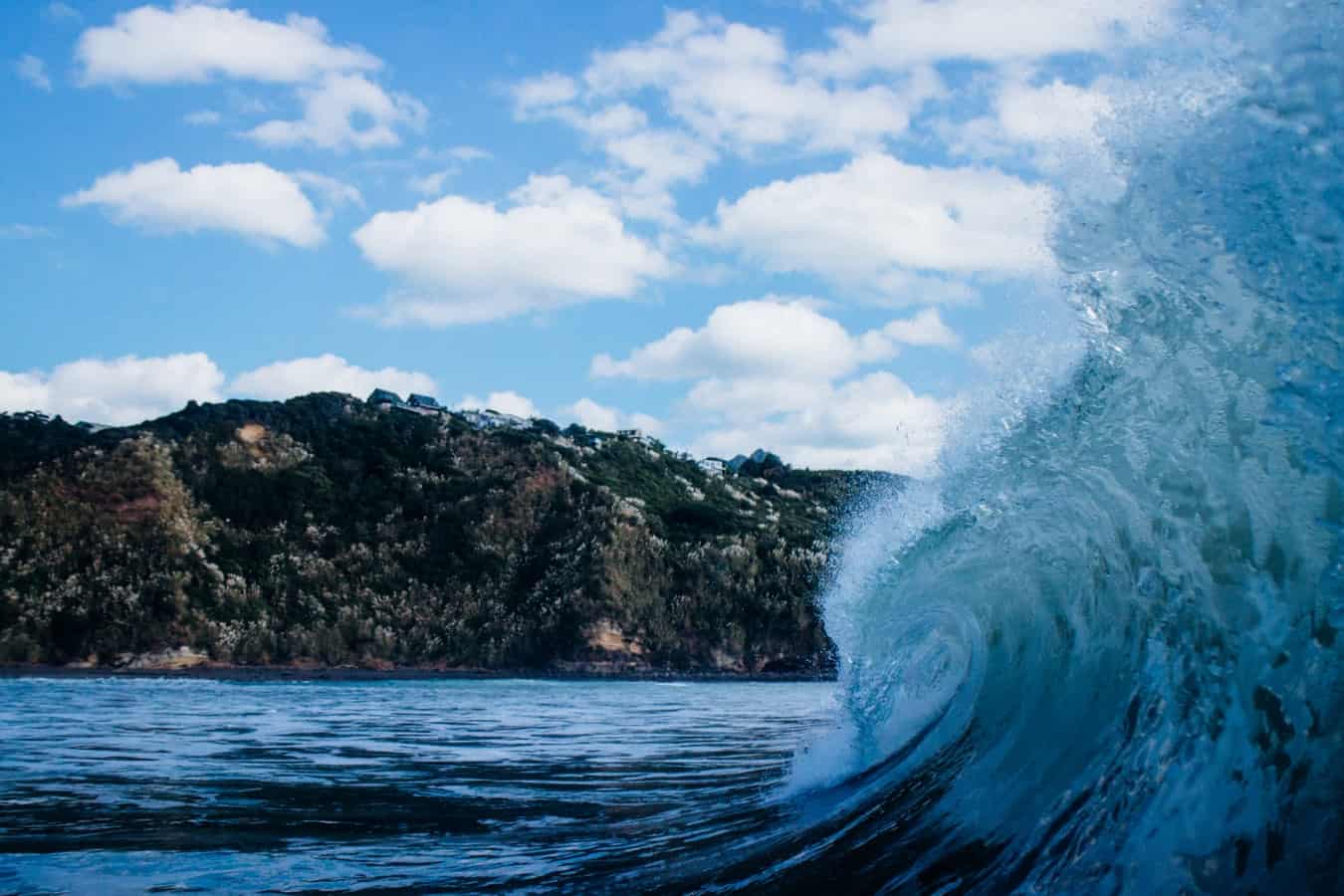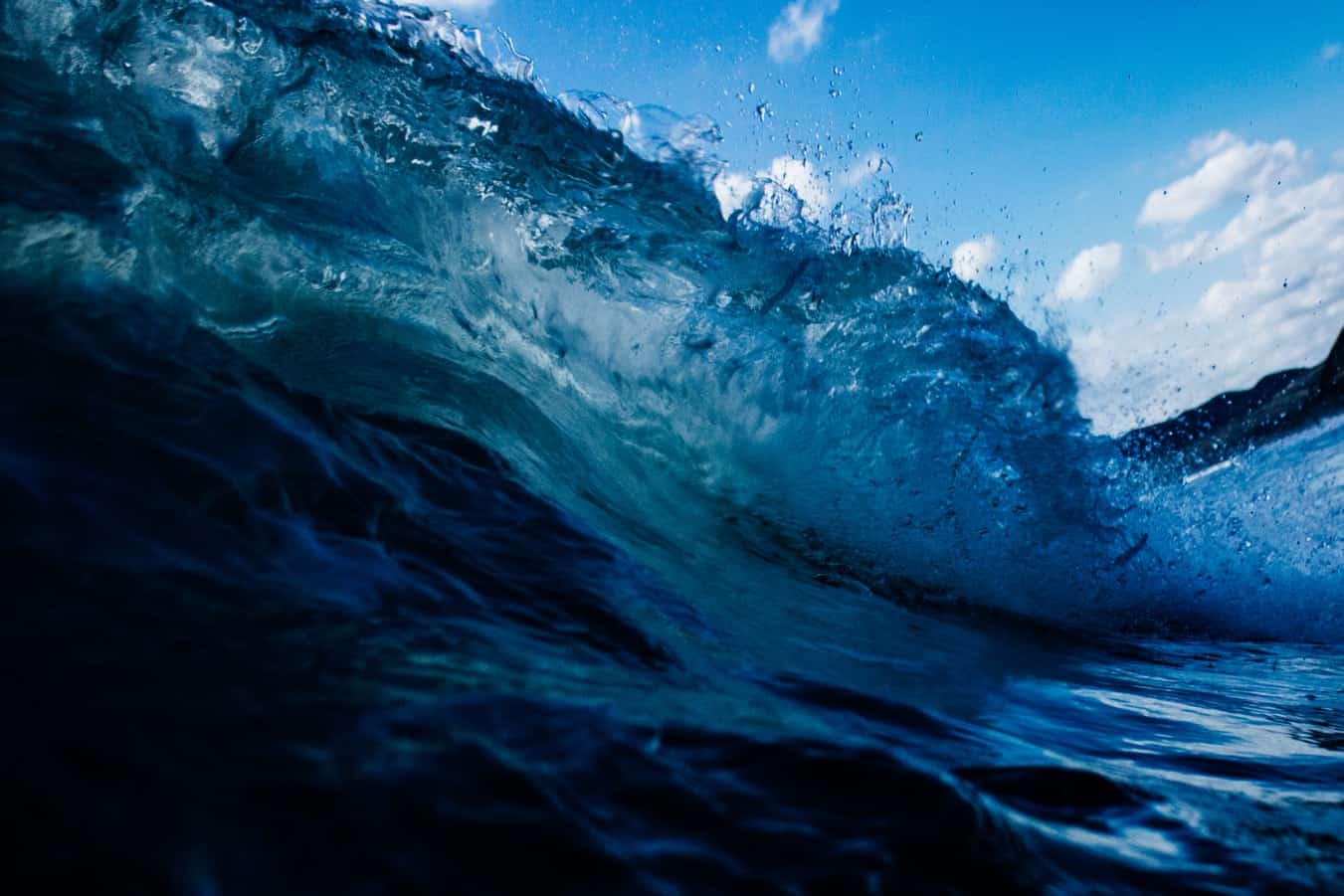Experienced surfers have learned through the years that just about any height of wave measured from the trough of the wave to its peak, can be surfed. The only exception is a wave that measures a foot in height or less. The size of a wave looks different and more or less formidable depending on your perspective. When you see a wave while lying on the surfboard and paddling, it looks much bigger than it would if you were standing up.
Can you surf 3-foot waves? Yes. 3-foot waves can be surfed and can have as much punch and strength as taller waves. What kind of board you use when riding a 3-foot wave depends on what you’re focused on. If you’re an experienced surfer and you want to work on controlling your nose movement, you would try it in a 3-foot wave. But for beginners, these waves are near perfect. But know this: most of the year, most surfers, no matter their level of expertise, will be riding smaller waves because most waves are of the shorter variety.
What Size Board Should I Use To Ride Smaller Waves?
Longboards were designed specifically for shorter waves, but you can use shortboards as well. The thinking was that it’s easier to maneuver a longboard into a wave, but as times and surfboard technology has improved, you’re no longer limited to a longboard. You can choose something smaller that has little drag and can get you to the wave quickly.
There’s an amazing array of surfboard options today; today, parts of one kind of traditional surfboard have been integrated into other boards. These new combinations loosen the restrictions on what you should use to ride smaller waves.
You will want a surfboard on which you can paddle quickly and that is easy to control. A surfboard that is both flat and wide will do the job. It’s been known for some time that boards with flatter bottoms make it easier to gain speed on the way to the wave. Flatter bottoms mean less friction and less resistance.
A thicker board allows you to stand higher in the water. There is much less hydrodynamic drag against thicker boards too, so you won’t be sacrificing speed.
When I refer to shortboards, I mean a board no more than a head taller than you. If you’re 5 feet 8 inches tall, you’d want a board that’s about 6 and a half feet tall. If you’re 6 feet tall, choose a board that is about 7 feet and a couple of inches in length.
What Are The Best Surf Fins For Small Waves?
There are a lot of fun designs to choose from. For smaller waves, you’ll want a fin that has the least drag.
We mention drag a lot here, so let me take a moment to explain it. Have you noticed that racing cars and sports cars are built low to the ground and have no straight edges? The classic Corvette is built just this way. The same is the case for Lamborghinis.
The body of these sports vehicles is designed in such a way so that they have the least aerodynamic drag. This is the resistance against the car made by the air as the car drives through it.
A tractor trailer has the most drag against it because of its boxy shape. The wind hits the truck head-on. The truck must expend more fuel and more horsepower to get through the wind and air it encounters.
In the case of surfboards, you want the most hydrodynamic fin, one that will allow for the least resistance. The less resistance, the faster the board will be on the waves and will make the job of paddling much easier.
A 4 fin design is great for riding short waves but make certain the third fin is furthest from the tail. Fins closest to the rails (the sides) of the board will result in the lowest drag.

What Is The Best Way To Measure Wave Height?
There are 2 different ways to measure weave height. They are called the Bascom Method and the Hawaiian Method. Both are used in surfing, but the Hawaiian method has gained the most popularity, even though it is somewhat inaccurate.
The Hawaiian Method measures the wave not from the front, where it has peaked and is already breaking, but from the back, behind the wave. However, since measuring from behind doesn’t take the wave trough into account, the measured height is only half of the full size of the wave.
So a wave that measured two feet from behind is 4 feet in height because the surfer is riding a 4-foot wave, not a two foot wave.
The Hawaiian Method was popular because it doesn’t allow for overestimation of the wave height, as many surfers tend to do. Simply take the height from behind and multiply by 2 and you can rule out exaggerating the wave size.
The Bascom Method is popular especially in destinations like Southern California. It is considered a fair and simple method for measuring actual wave height. However, it allows for overestimating the wave size.
The wave is measured by standing on the beach, eyes aligned with both the crest of the wave and the horizon. Look down next to the sea level and compute the distance between them.
What Are The Advantages To Riding 3-Foot Waves?
You will get a lot of momentum on 3-foot waves, almost as much as waves popularized in movies and magazines. There is another advantage that for some, makes them ride smaller waves more often that barrel or high-cresting 7 to 10-foot waves.
Surfing has become popular in the last 3 decades, and this means that there are a lot of people with surfboards in the ocean. Peak surfing times when the waves are high from wind and the gravitational pull of the moon, make the ocean overpopulated.
Surfers need to negotiate with other surfers to see who can ride the waves first and who waits. It is a traffic jam at times and takes away a surfer’s freedom to choose when and where he wants to catch waves. Seeing the perfect wave, he’s inspired to ride it, but he can’t because another surfer is there in the middle, ready to go. He must wait.
If there are 3-foot waves in the ocean and 8-foot waves as well, most surfers will rush to the bigger waves. No one rides the smaller ones, and this attracts surfers who want to connect with the ocean and the waves without anyone bothering them.
More important, everyday surfers check reports provided by surfing organizations online, and when they’re told the waves will be average and ordinary, surfers will skip going to the beach that day. Other surfers rush to the beach and will be able to ride the smaller waves.
Intermediate-level surfers love riding smaller waves. It can also be turned into a social event. It’s easier to meet other surfers and strike up a conversation in a relaxed environment.
3- foot waves are big enough to ride with a shortboard. You can also use a longboard and focus on nose-riding.
You won’t need to do any duck diving or barrel rolling. You can paddle right through and set up for the next one. Palling is a lot easier. If you’re looking to chill but you want to surf. 3-foot waves are perfect. It will be both a relaxing experience paddling and swimming, and also exhilarating as you ride to the shore.
Related Questions
Are Longboards Better To Use On Smaller Waves If You’re A Beginner?
Longboards of any size were designed especially for small wave riding. If you’re just starting, a longboard is better than a shortboard because they have extra volume and are more buoyant, so it’ll be easy to stand and ride. Longboards are also longer, so when the nose of the board is caught by the wave, you won’t wipeout that easily.
Longboards are very stable and the easiest surfboard to ride on. On 3-foot waves, you can work on your technique.
Can I Gain Any Speed On 3-Foot Waves On A Shortboard?
It takes a bit more work to gain speed on a shortboard. If you’ve got your paddling technique down, you’ll need to exert a lot of energy and strength on the approach. Paddle into the wave with all the force you can muster until you feel the nose has caught the wave.
Then, the angle in the boar in the wave’s direction. This will help prevent losing speed.
Where Are The World’s Best Surfing Spots?
If you have the expendable income to travel to surfing hotspots around the world, then we recommend these spots. They’re great for beginner and intermediate level surfers.
- Surfer’s Point, Barbados
Hollow waves break here on the southern tip of Barbados. You can move fast on smaller waves. This is a great spot for beginner-level surfers.
- Surf Pool, United Arab Emirates
Yes, okay, the waves here are created artificially since there is no nearby ocean. However, wave heights can be adjusted and can go up to 15 feet. You can visit this intriguing country and ride 3-foot waves to your heart’s content.
- Tofino on Vancouver Island, Canada
The surrounding rainforest offers breathtaking views while you surf any wave size you wish. You can practice your skills and safely attempt higher waves. Remember to pack a wetsuit, because both the water and the air are colder than most surf spots.

